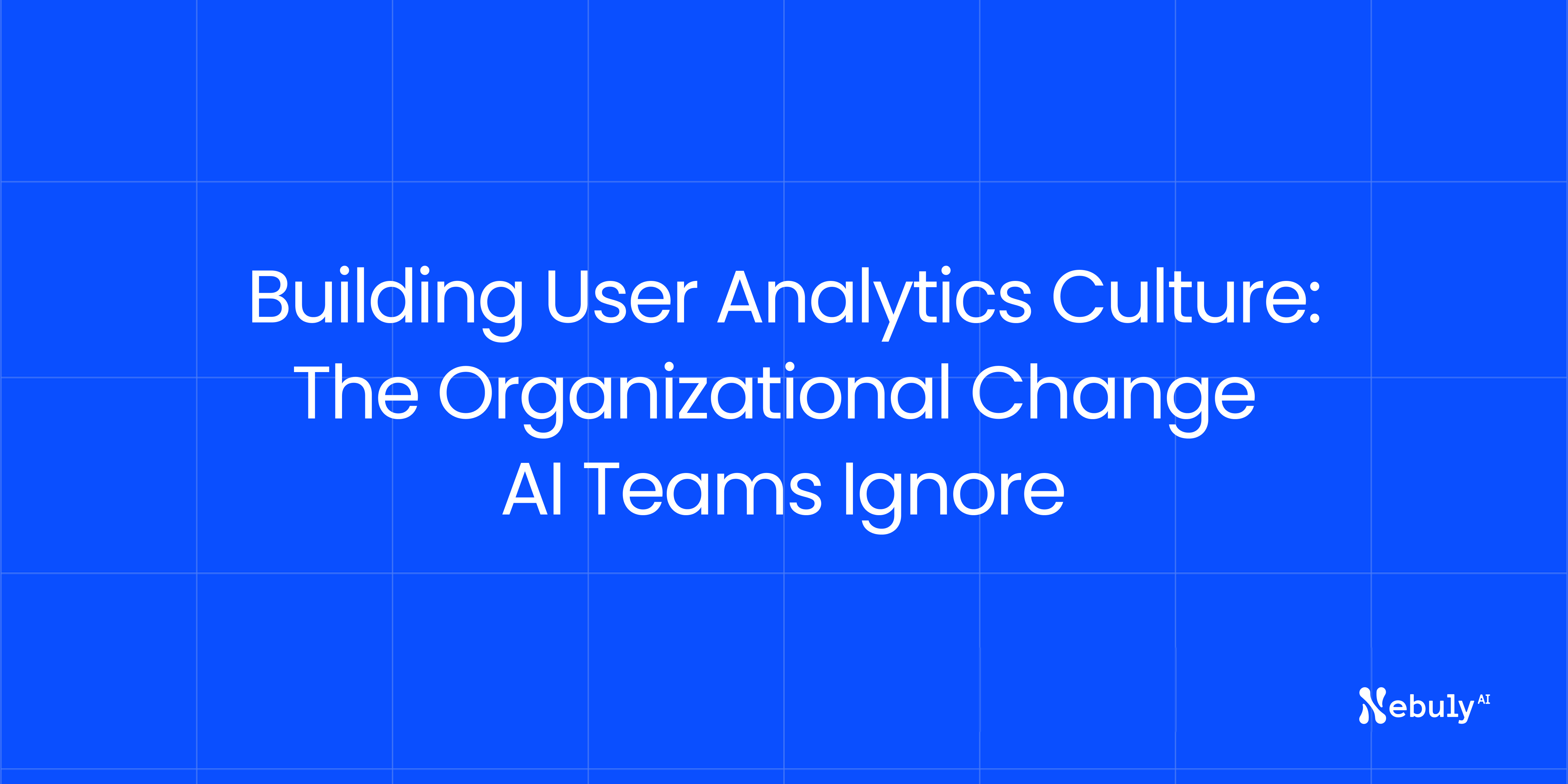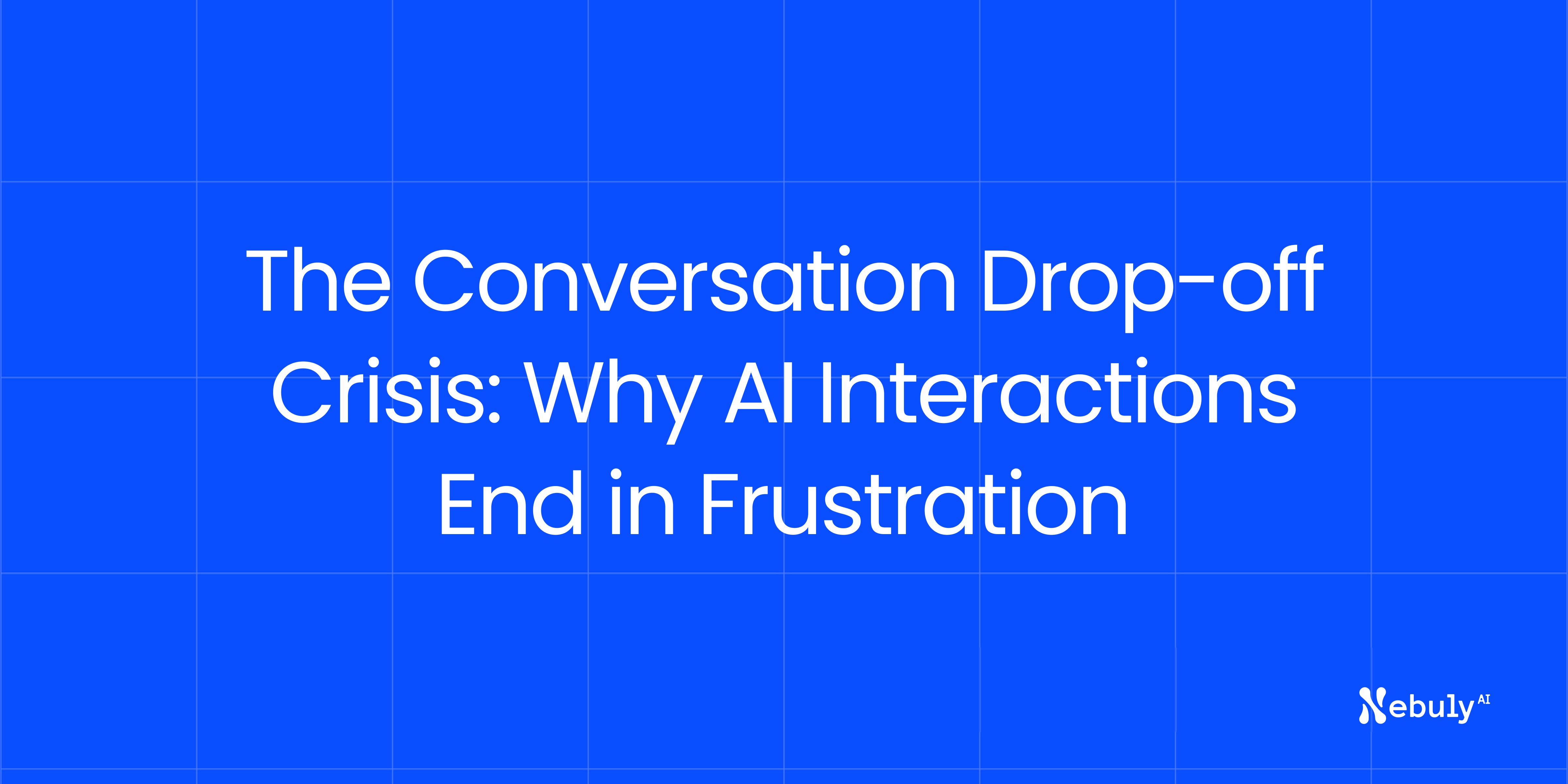The shift to LLM-powered conversational interfaces, chatbots and assistants, brings forth a need to analyze and understand large volumes of unstructured, text data.
Customer conversations within the LLM chat transcripts form a rich set of insights. However, tapping into these insights requires more than just traditional qualitative data analysis techniques; it calls for AI-driven sentiment analysis.
What is AI Sentiment Analysis?
AI sentiment analysis, also known as opinion mining, involves using AI technologies to process and interpret the emotional tone of textual data. This analysis helps businesses understand sentiments expressed by users and customers across channels like social media, customer feedback, and support. Sentiments are typically categorized as positive, negative, or neutral.
Today, AI technology is essential for effective sentiment analysis, providing the most precise and scalable tools to detect customer feelings, reactions, and attitudes toward products or brands.
How Does Sentiment Analysis Work?
At its core, sentiment analysis has typically leveraged techniques such as natural language processing (NLP) and machine learning (ML) to process and analyze text data. Today, advanced sentiment analysis software employs large language models (LLMs) that are trained with huge data sets and can pick up complex emotions and user context with higher accuracy, also in multimodal interfaces that may use text, voice or video.
The process of training and using a Sentiment Analysis model can be split to the following steps:
- Data Collection: Capturing data from the user interaction, text, words, facial expressions on a video interface.
- Text Preprocessing: Cleaning and preparing the data for analysis by tokenizing sentences, removing stop words, and converting words to their base forms.
- Feature Extraction: Transforming text into numerical values or vectors that represent key features or sentiments.
- Model Training: Using supervised learning techniques where the model is trained on labeled datasets to identify sentiment indicators.
- Sentiment Classification: Applying the trained model to new data to classify the sentiment as positive, negative, or neutral.
Types of Sentiment Analysis
Sentiment analysis can be categorized into different types based on the depth and specificity of analysis required:
- Fine-grained Sentiment Analysis: Provides a detailed polarity score, often on a scale (e.g., very positive to very negative).
- Aspect-based Sentiment Analysis: Identifies sentiments related to specific aspects or components of a product or service.
- Emotion Detection: Recognizes specific emotions like happiness, sadness, anger, or surprise within the text.
- Intent Analysis: Determines the user's intent behind the text, such as a purchase intention or a query.
Examples of where Sentiment Analysis is useful
1. Integrated Customer Insights
Sentiment analysis provides a deep understanding of customer behavior by linking sentiments to specific intents or demographic. This approach enables businesses to tailor their services to meet the precise preferences of their customers or to detect and react to unmet demand.
2. Product Development
Analyzing customer feedback and reviews through sentiment analysis helps businesses identify strengths and weaknesses in their products. This feedback loop is crucial for iterative improvements and innovation.
3. Brand Monitoring
By continuously monitoring conversations on digital channels, sentiment analysis helps businesses stay ahead of public opinion trends. Immediate identification of negative sentiment allows for swift responses to, for example, a potential PR crises, preserving brand reputation.
4. Customer Service
Sentiment analysis tools can prioritize customer support tickets based on the urgency and sentiment expressed. This ensures that critical issues are addressed promptly, enhancing overall customer satisfaction.
5. Data-Driven Marketing Strategies
Marketers can fine-tune their campaigns by understanding how different segments of their audience feel about their products or services. Sentiment analysis provides insights into customer preferences and pain points, allowing for more targeted and effective marketing efforts.
Sentiment Analysis Tools
Several tools are available to assist in coducting sentiment analysis. These tools are often built for specific channels or use cases like tracking Social Media and can make the process from a specific type of data collection to a finalized report much easier.
The Future of AI Sentiment Analysis with LLMs
With the growing popularity of large language models (LLMs) and conversational interfaces, incorporating sentiment analysis is becoming increasingly important. At Nebuly, we’ve built a platform that detects and interprets user sentiments from the conversations that users have with your large language model (LLM) applications. Our platform meticulously tracks user interactions, providing real-time insights into their intents, emotions, and overall satisfaction/ dissatisfaction.
Our unique framework for LLM user sentiment analytics goes through the following 4 steps:
- Understand the actions within a user-LLM interaction
- Understand the properties of an interaction
- Extract the flow of a conversation
- Detect user sentiment
By including the actions, properties and conversation flow to the sentiment analysis, our framework allows you:
- Analyze the emotional tone behind user communications to ascertain whether their feelings are positive, negative, or neutral.
- Identify the underlying intentions, goals or objectives that users aim to achieve through their interactions.
- Determine the main topics or themes that are being discussed or inquired.
- Capture and interpret the specific questions or commands users are inputting into the system.
- Extracts significant keywords or phrases that are pivotal in understanding the context and focus of user queries
Nebuly’s AI sentiment analysis with LLM-driven interfaces transforms unstructured, conversational data into actionable insights, ensuring you remain responsive and customer centric.
In conclusion, AI-driven sentiment analysis is no longer a futuristic concept but an easy to use, present-day necessity for businesses aiming to thrive in a conversational AI & LLM world. If you're interested in getting started with AI sentiment analysis, we'd love to chat. Schedule a meeting with us today, HERE!






